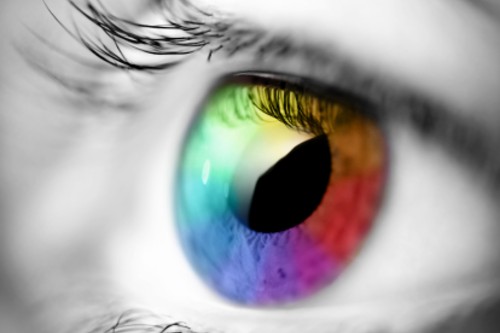
Older women could be vulnerable to harmful inflammation from new gene therapies to treat incurable eye diseases, new research has found. The University of Bristol-led study, published in Molecular Therapy, reveal how age and gender affects inflammation caused by gene therapy treatments and could cause damage to the eye. The findings could help improve the therapy's effectiveness for eye conditions and highlights the need for personalised treatment to reduce risk and ensure a better outcome for all patients.
Around two million people live with sight loss in the UK (1). With more than one million blind and partially sighted people living with sight loss caused by a long-term eye health condition that cannot be reversed, such as age related macular degeneration, glaucoma, and diabetic eye disease.
Until recently, some eye diseases had been considered incurable but new gene therapy techniques have shown great promise. However, increasing evidence from clinical trials have reported problems with unexpected eye inflammation, leading to vision loss in some patients.
Inflammation is a major challenge for this type of treatment because it can limit its effectiveness. Researchers at Bristol wanted to better understand how the eye reacts to the methods used to deliver the therapy, not the disease itself, to improve safety and effectiveness of future treatments.
In gene therapy techniques, a harmless virus called the Adeno-Associated Virus (AAV) is modified to deliver the therapeutic genes into cells at the back of the eye helping them to function normally again and preventing disease. This delivery system is widely used in gene therapy because it can efficiently enter cells and deliver the genetic instructions needed to treat disorders, such as those which can lead to sight loss and blindness.
Scientists believe some of the adverse side effects from AAV gene therapy are caused by the immune system recognising the delivery virus as potentially harmful. This impacts the effectiveness of gene therapy either directly through inflammation or indirectly as it limits necessary dose increases.
To improve the safety and effectiveness of these gene therapies the researchers wanted to better understand these responses so they can develop management strategies.
To test this theory, the research team compared, in animal models, how both male and female eye cells of different ages (young, middle-aged, and older) responded to AAV gene therapy.
The study showed that older female's immune cells respond differently to the delivery system, and have an increased risk of harmful reactions, causing damage to the eye.
The research team discovered that eye cells from young male and female animal models had a similar short-term immune response. However, the way immune cells (microglia and T cells) reacted at a molecular and cellular level was different between male and female cells.
As the cells aged, researchers found the inflammation lasted longer and was more severe in both genders. While cells from older males had a consistent immune response pattern, the cells from older females had a much stronger stress and inflammation response that was linked to signs of retinal damage.
The findings suggest that both gender and age play a significant role in how the body reacts to AAV gene therapy, indicating that older women could have an increased risk of harmful reactions that might cause damage to the eye and lead to vision loss in some patients.
Dr Alison Clare, Senior Research Associate from Bristol Medical School: Translational Health Sciences (Ophthalmology) and the study's lead author, said: "Gene therapies are an emerging tool to treat incurable eye diseases and a leading approach being developed for treating a variety of eye disorders that lead to sight loss, including hereditary - with an approved gene therapy now available - and age-related diseases.
"Our findings are the first to demonstrate age and sex influences the risk of significant adverse inflammatory reactions in the eye to gene therapies. The research has highlighted the critical need to separate patients for gene therapy treatment based on gender, age and risk. It also underlines the need to understand the risk-reward benefit for gene therapy and indicates older female patients could be at risk from serious adverse effects by any prospective eye gene therapy."
The research was supported by National Institute for Health and Care Research (NIHR) Biomedical Research Centre based at Moorfields Eye Hospital NHS Foundation Trust and UCL Institute of Ophthalmology, Wellcome (Institutional Translation Partnership Award Fellowship), Medical Research Council (Impact Acceleration Account), Sight Research UK and The Underwood Trust.
Paper
'Characterisation of the ocular inflammatory response to AAV reveals divergence by sex and age' by Alison J. Clare, Philip M. Langer, Amy Ward, Ying Kai Chan, Andrew D. Dick, David A. Copland in Molecular Therapy [open access].






